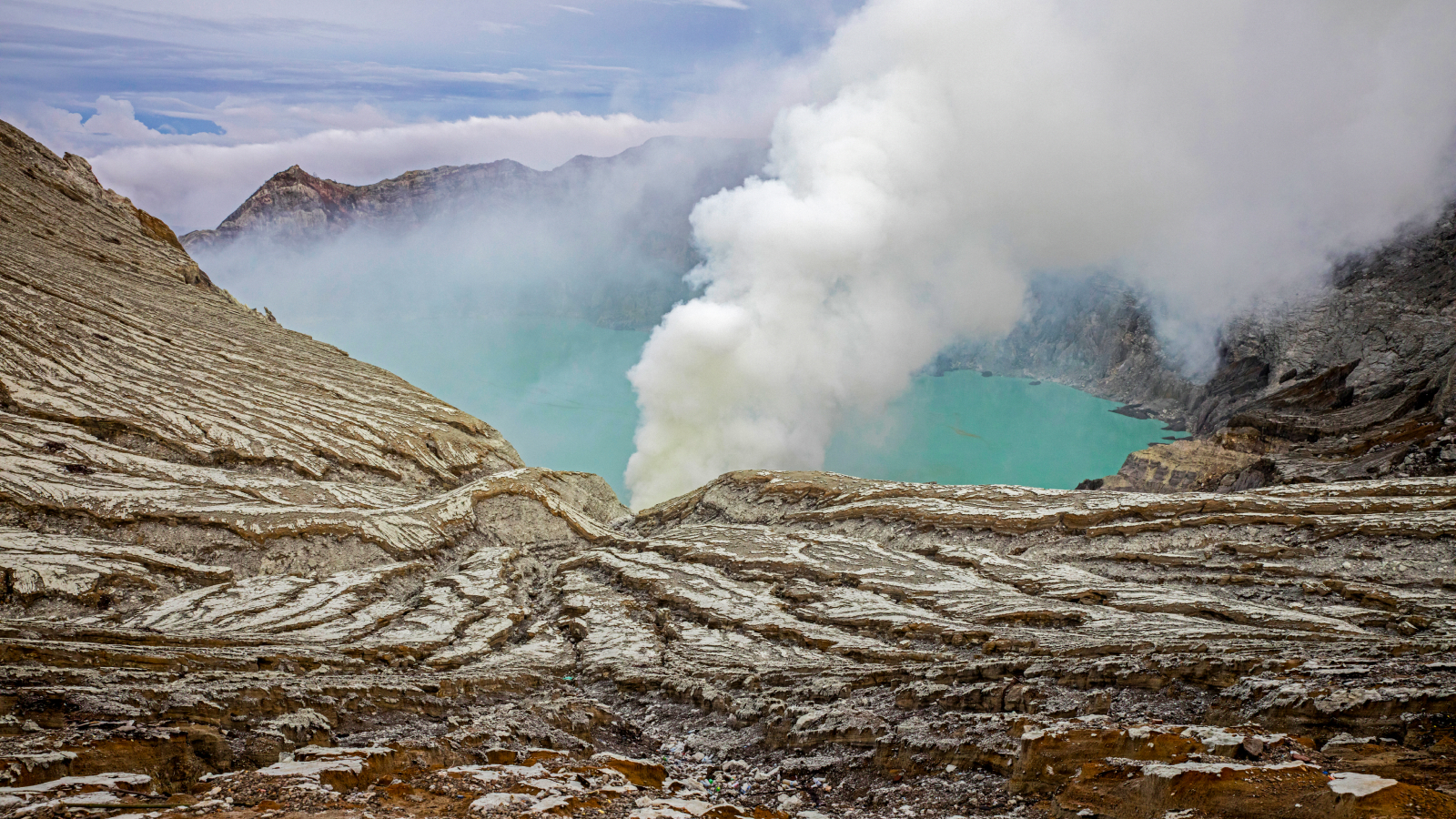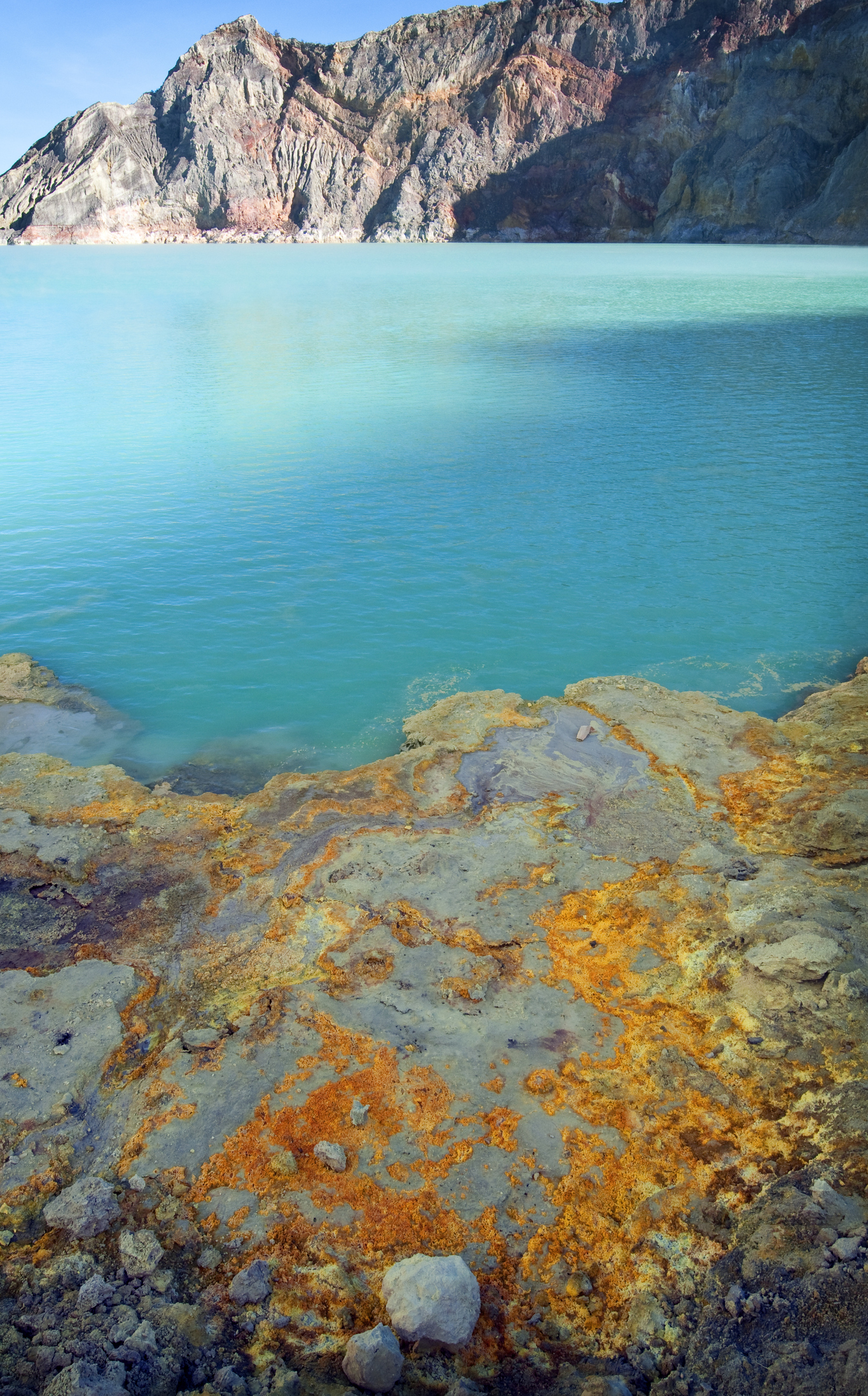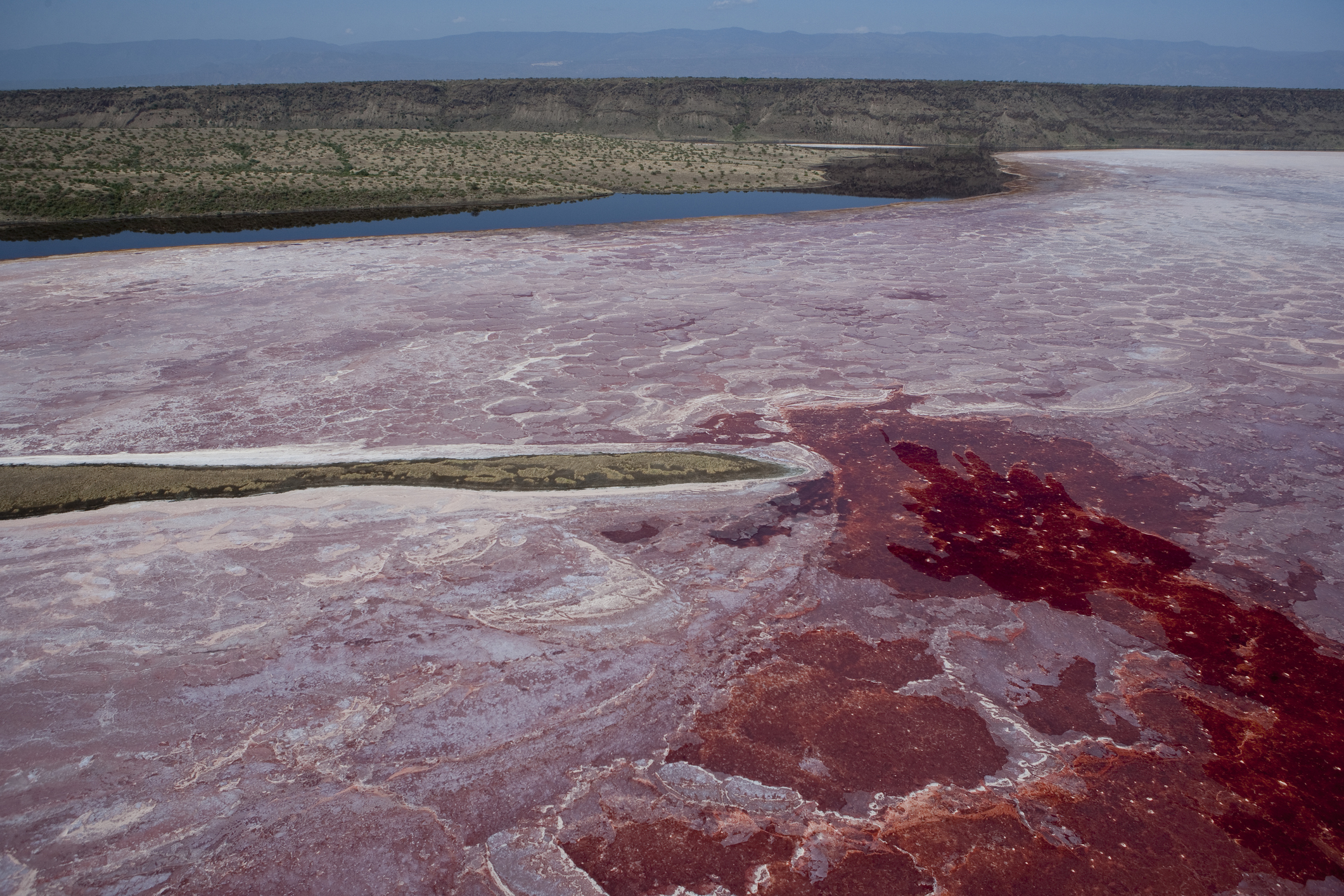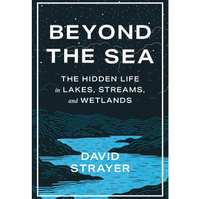'A challenge and an opportunity for evolution': The extreme, hidden life thriving in Earth's most acidic and alkaline lakes
"The most acidic natural inland waters are the lakes that lie in the craters of volcanoes, like Kawah Ijen in Indonesia. These lakes are so rich in sulfuric acid that they may have a pH as low as 0.1. To put this in context, fresh battery acid has a pH of about 0.7. "

A volcanic crater in Indonesia over 7,700 feet (2,350 meters) above sea level is home to Earth's largest acidic lake, with water like battery acid. In this excerpt from "Beyond The Sea: The Hidden Life in Lakes, Streams, and Wetlands" (Johns Hopkins University Press, 2024), author David Strayer examines the extreme chemistry of some of our planet's natural lakes — and the life they host.
I know people who really like water chemistry. They spend all day thinking about redox reactions and mass balance and valences and solubility indices and spiraling metrics, and when the workday is over, they go out for a beer with their friends and talk about redox reactions and spiraling metrics. (In my experience, water chemistry enthusiasts are often beer connoisseurs as well, which makes sense in a weird way if you think of a glass of beer as a special kind of aqueous solution.)
These are people who when asked to name their favorite chemical element say "ooh, ooh, can I have three?" and then name five. I'm guessing that you're not one of those people.
So instead of going into great detail, element by tedious element, about the enormous variation in the chemical content of inland waters, I'm just going to briefly talk about how much pH varies across inland waters, assume that is sufficient to make my point about the chemical diversity of inland waters, and move on to subjects that you like better than water chemistry.
You may remember from high school chemistry that pH is a measure of whether a substance is acidic or basic (or "alkaline"). Materials that are neutral (neither acidic nor basic) have a pH of 7, acidic materials have a pH less than 7 (household vinegar has a pH of about 2.5), and basic materials have a pH greater than 7 (household ammonia has a pH of about 11.5). The pH scale is logarithmic — a change in pH of one unit represents a 10-fold change in acidity (technically, a 10-fold change in the activity of hydrogen ions). So vinegar at a pH of 2.5 has about a billion times more hydrogen ion activity than does ammonia at a pH of 11.5.
The logarithmic scale allows us to conveniently express enormous differences in chemistry but makes it easy to forget that small differences on the pH scale can mean big differences in chemistry which can have large consequences.
For instance, the ocean today has a pH of around 8.1, which tells us that it is a little basic. Higher concentrations of carbon dioxide in the air resulting from fossil fuel burning have caused the ocean's pH to fall 0.1 units from a preindustrial value of 8.2, and models suggest that it may fall to 7.8 by the year 2100. These sound like small changes hardly worth worrying about. But a change from 8.2 to 8.1 represents an increase in hydrogen ion of 26%, and a change from 8.2 to 7.8 means an increase of 150%.
Sign up for the Live Science daily newsletter now
Get the world’s most fascinating discoveries delivered straight to your inbox.
These changes are enough to cause serious problems for marine life. Organisms like clams and corals that make their shells out of calcium carbonate find it increasingly difficult to build and maintain their shells if the pH drops just a few tenths of a point. Ocean scientists are now scrambling to understand and find ways to prevent or manage these changes before we lose important parts of ocean ecosystems as the pH drops by 0.3 or 0.4 units.
The pH range across inland waters is far greater than the few tenths of a point that are so important in the ocean. This exposes inland water organisms (and chemical processes) to an enormous range of chemical conditions. Most inland waters have a pH between 4 and 9. Again, this range may sound modest, but it represents a 100,000-fold range in hydrogen ion activity. And there are waters that lie outside even this expansive range.

The most acidic natural inland waters are the lakes that lie in the craters of volcanoes, like Kawah Ijen in Indonesia. These lakes are so rich in sulfuric acid that they may have a pH as low as 0.1. To put this in context, fresh battery acid has a pH of about 0.7. The label on battery acid (which remember is about a quarter as strong as this lake water) warns that it causes severe skin burns and eye damage and advises consumers to use personal protective equipment, to immediately call a poison control center if it gets swallowed, and to dispose of it in an approved waste disposal plant. You might feel pretty confident in guessing that nothing lives in this lake.
But when scientists sampled Kawah Ijen (an undertaking that required special gear; as you might imagine, a lot of regular gear like aluminum boats would dissolve in the lake water), they found a green alga and three kinds of archaeans living in the lake.
Apparently, no animals live in the lake. However, the acid water in its outlet stream is gradually neutralized as it flows downstream, and the researchers discovered fly larvae called chironomids living in the stream at the point where the outlet stream reached a pH of about 2.5 (like vinegar, remember?).
And more remarkably, not only do these species survive in highly acidic waters but some of them even prefer these harsh conditions. One of the archaeans living in volcanic waters can tolerate pH below 0 and grows best at a pH of 0.7. That is, battery acid is its ideal pH and vinegar and lemon juice are far too mild for its taste. (If you’re wondering about how low the pH of nonnatural waters can go, a pH as low as -3.6, yes that’s minus 3.6, has been recorded in some groundwaters in California polluted by mining wastes. It was a major technical problem for scientists to figure out even how to measure such low pH.)
At the other end of the spectrum, alkali lakes often have a pH of 9.5 to 11.5. Alkali lakes typically occur in regions that are so dry that any water that runs into the lake leaves by evaporation rather than through an outlet stream. This allows minerals dissolved in the water to build up to very high concentrations. Depending on the surrounding geology, such lakes may develop into salt lakes (like the Great Salt Lake in Utah) that are filled with sodium chloride (ordinary table salt) or alkali lakes that contain a lot of sodium carbonate (washing soda) and other minerals that give the lakes such high pH and alkalinity.

Alkali lakes and the salt flats that form when the lake dries up altogether have been in the news lately because some alkali lakes and flats are a major source of lithium, which is needed to make batteries for electric cars and which has other uses. Alkali lakes also show up in the old westerns — parched travelers who ran out of water two days ago come across a desert pool, and the greenhorn in the group throws himself into the brackish water, swallowing it in huge gulps. Then he stumbles away from the water, retching, after which the laconic leader of the band remarks: "bad water."
Again, you might think that such bad water wouldn't support life. As is the case of the corrosively acidic volcanic lakes, few species other than microbes can tolerate the harsh conditions in alkali lakes, but these few species can be enormously productive. In fact, alkali lakes can be among the most productive of inland waters in terms of the sheer amount of biomass that is grown each year.
So in contrast to the pH of the ocean, which is very near 8.1, the pH of inland waters spans a range from about 0.1 to 11.5, representing a 250 billion–fold range in hydrogen ion activity. Life exists and even thrives over this enormous range. This huge range in pH presents both a challenge and an opportunity for evolution to produce species whose ecology and physiology are adapted to some specific part of it: different species for strongly acid waters, mildly acid waters, neutral waters, mildly alkaline waters, and strongly alkaline waters.
Excerpted from "Beyond the Sea: The Hidden Life in Lakes, Streams, and Wetlands" by David Strayer. Copyright 2024. Published with permission of Johns Hopkins University Press.
Beyond the Sea: The Hidden Life in Lakes, Streams, and Wetlands — $24.49 on Amazon
An exciting foray into Earth's inland waters, the remarkable species they contain, and the conservation challenges of protecting them.











